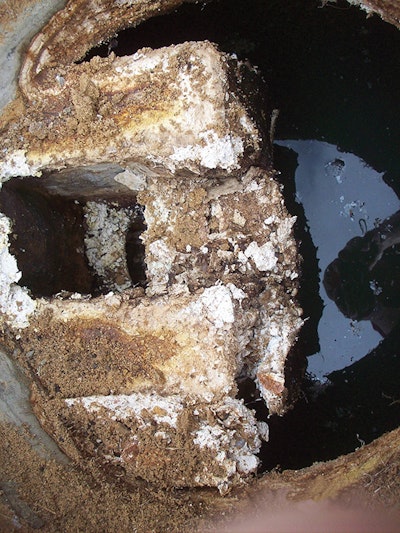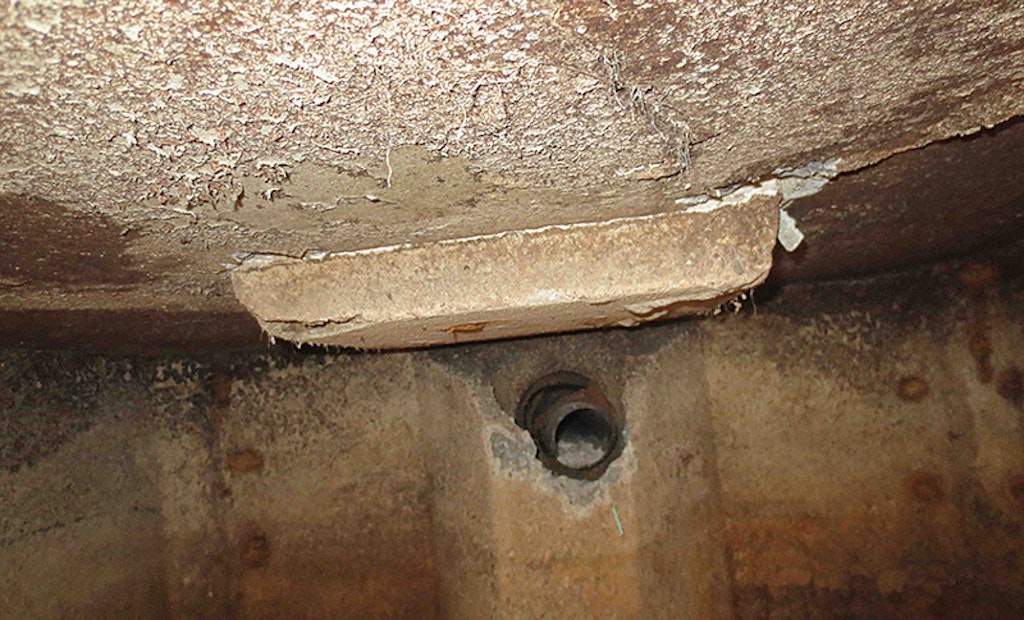Interested in Onsite Systems?
Get Onsite Systems articles, news and videos right in your inbox! Sign up now.
Onsite Systems + Get AlertsQUESTION: As I inspect a septic tank, how do I know when the baffles need to be replaced?
ANSWER: Through the years, I have had numerous discussions with service providers about concrete tank corrosion problems, including baffle deterioration – typically focusing on the outlet baffle.
In older tanks, the baffles were often cast-in-place concrete. In newer tanks, the baffles are sanitary tees, which allow for an effluent screen at the outlet. Many states and local governments require these baffles and screens for new construction. However, there are a lot of existing older tanks in varying conditions, which makes the timing of baffle replacement a legitimate inspection question.
It is important to remember the purpose of the baffles, which I wrote about in this column for a previous discussion on corrosion. The inlet baffle directs the flow from the house sewer downward into the tank creating a longer detention time for settling of solids. It also keeps the floating scum layer from plugging the inlet pipe.
BE PROACTIVE
The outlet baffle keeps floating scum or debris from passing to the drainfield and ensures the effluent going on to the next part of the system is from the tank’s clear effluent zone. These days we enhance debris removal by using effluent screens to keep large floating solids from passing downstream.
My answer to the question then is: If the baffle is deteriorating and the deterioration prevents the baffle from doing what it is supposed to, it needs to be replaced. I personally would take it one step further to say if the deterioration is such that by the next scheduled maintenance visit it will not be working properly, it should be replaced.
The second part is subjective and it is easier to suggest it in this column than to convince the homeowner they need costly work done on their system. But if we are professionals, we need to be honest in these situations and try to convince them to replace the baffles now at a limited cost in order to save them money down the road if or when the soil treatment and dispersal area is damaged.
As indicated above, many permitting authorities require effluent screens if the tank is replaced or repaired. So it’s important to know your state and local requirements for repair and replacement. Selling the homeowner on the idea that an effluent screen is an insurance policy to protect more expensive parts of their system should be relatively easy.
I’m including photos to help define what is being discussed. I would like to thank Jeff and Kim Seipp of High Plains Sanitation in Colorado for the photo of the outlet baffle. We have had a continuing discussion about tank conditions and causes of corrosion. The other photo, sent from Arizona, was taken as part of a point-of-sale real estate inspection.
FULL TANK REPLACEMENT?
One photograph shows a poorly designed inlet baffle, which in my opinion is not going to fulfill the function of directing flow downward or prevent scum from plugging the baffle. There are probably some other concerns with this tank; since it looks like there is deterioration in the lid and evidence that rebar is beginning to show through, which may mean the entire tank needs to be replaced. At the very least, the baffle needs to be replaced.
In the second photo, the outlet baffle is deteriorating and will no longer prevent scum or other debris from moving downstream, so it should be replaced. There is one other problem evident here: The piping is far enough inside the tank that there is not much clear space between the baffle wall and the piping. The good news is this is the outlet baffle and so solids plugging should not be an issue; but the piping out should be looked at and corrected when the baffle is replaced.
One important note: When removing the remains of the concrete baffle, use caution so the tank wall is not damaged. In some cases, checking out the baffle will lead to evidence that the tank is deteriorating and in need of replacement. This situation reinforces the importance of having an informative conversation with the homeowner.







